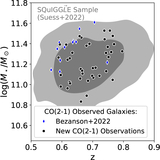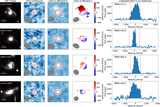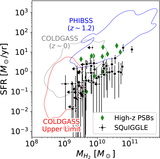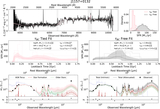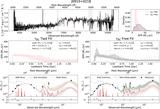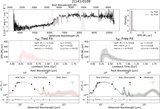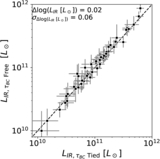Image Details
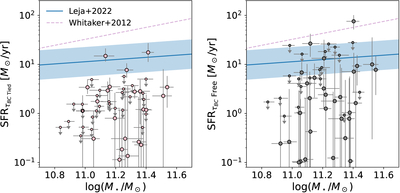
Caption: Figure 10.
Star-forming main sequence, with the best fit from J. Leja et al. (2022) at z = 0.7 shown (with 0.3 dex scatter in blue) and the K. E. Whitaker et al. (2012b) fit shown in purple. On the left, we show the measurements from our τBC Tied fits (pink), and on the right, we show our τBC Free fits. For clarity, for all SFRs where the median is below 0.1 M⊙ yr−1, we show the 3σ upper limit. Maximal buried star formation can raise the SFRs of SQuIGG﹩\overrightarrow{L}﹩E galaxies, with a median offset of 0.5 dex in sources with SFRBuriedSFAllowed > 1 M⊙ yr−1, to place them at most on the J. Leja et al. (2022) main sequence (but still essentially allow below the K. E. Whitaker et al. 2012b main sequence). However, there is considerable uncertainty in those dust-obscured SFRs, and in every model, the posterior for the SFR in the τBC Free fit overlaps significantly with the posterior of the τBC Tied fit.
Copyright and Terms & Conditions
© 2025. The Author(s). Published by the American Astronomical Society.


